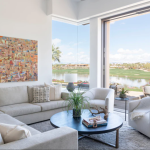A patio isn’t just a backyard feature. It’s a functional extension of your home, a space where relaxation meets purpose. Whether you’re designing a modest nook for quiet coffee mornings or envisioning a sprawling setup for entertaining, the decisions made in the planning phase shape how this outdoor space works and feels. From layout to lighting, every element plays a role in the outcome.
A successful patio isn’t always about extravagance. It’s about careful planning and paying attention to detail, allowing the design to fit your lifestyle, the space available, and the surrounding environment. A poorly planned patio may look appealing for a season, and one that’s designed with foresight can last for years and continue to provide value throughout changing seasons and needs.
Let’s explore the different dimensions of creating a patio that complements your home and becomes a functional part of your daily living.
Prioritize Your Purpose From the Start
The intended use of the patio should drive every decision. A space designed for outdoor dining will require different dimensions and features than one meant for sunbathing or gardening. Think about how often you’ll use it, the number of people you want to accommodate, and what kinds of activities it will support. Planning with use in mind helps guide both the size and material choices right from the beginning.
When the space supports the right activities, it naturally becomes more inviting. A mismatch between function and design, on the other hand, can lead to frustration or underuse.
Let the Surroundings Guide the Design
Instead of imposing a design on the area, take clues from the immediate surroundings. Trees, fences, sunlight, and slopes all offer natural boundaries or opportunities. A patio positioned for morning light might serve a breakfast spot perfectly, while one that sits under tree shade could be ideal for late afternoon lounging.
Paying attention to things like soil condition and water flow helps in avoiding surprises later. Drainage issues can ruin the longevity of certain surfaces, and ignoring elevation might cause discomfort in furniture placement or footing.
Material Choices Matter More Than You Think
Concrete, stone, pavers, and wood all bring different pros and cons, both in aesthetics and maintenance. Each surface affects how the patio feels underfoot, how it responds to temperature changes, and how much time it demands for upkeep. There’s color and texture to think about, lighter tones can brighten up shaded areas, while darker ones absorb heat and provide contrast in open spaces.
Durability and comfort should be balanced. While natural stone may look beautiful, it can be expensive and prone to shifting unless installed with care. Wood brings warmth, though it may require staining and sealing to stay in shape over time.
Think About the Flow of Movement
Where people enter and exit, how they move around furniture, and where they naturally gravitate, all shape how the space is used. A great patio feels effortless to navigate. Leave space between seating and pathways so movement doesn’t feel forced. Entry points from the home should lead smoothly to functional zones rather than blocked areas or awkward corners.
This applies to both furniture and built-in elements like fire pits or grills. Keep open space where it counts, and avoid creating choke points or cramped arrangements.
Work With the Right Professionals
Getting the layout right from the start often requires professional insight, especially when dealing with grading, electrical work, or advanced structural elements. Partnering with experienced teams, such as Platinum Deck & Patio Installation, can help you avoid costly errors and make decisions you might not have considered on your own. With their experience, details like elevation changes, permitting, and material compatibility are addressed with precision, leaving you with a space that’s both beautiful and practical.
Working with the right contractor doesn’t mean relinquishing control. Instead, it gives your ideas structure and feasibility, translating them into a space that aligns with your goals without unnecessary delays or changes later on.
Greenery Can Soften the Hardscape
Adding planters, garden beds, or trellises introduces life and motion to an otherwise static environment. Even if your patio is surrounded by a lawn or garden, integrating greenery directly into the design helps bridge the transition from hard surfaces to natural surroundings.
Think beyond decorative appeal, plants can provide privacy, control wind, and attract pollinators. Select species that suit your climate and maintenance preferences. With thoughtful placement, greenery becomes a natural complement rather than an afterthought.
Taking the time to think through every element, from sunlight angles to surface texture, helps avoid costly revisions. It gives your outdoor space a chance to grow with you, adapting to new seasons, new gatherings, and new moments of quiet you didn’t realize you needed.














